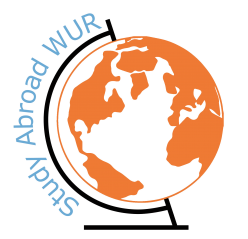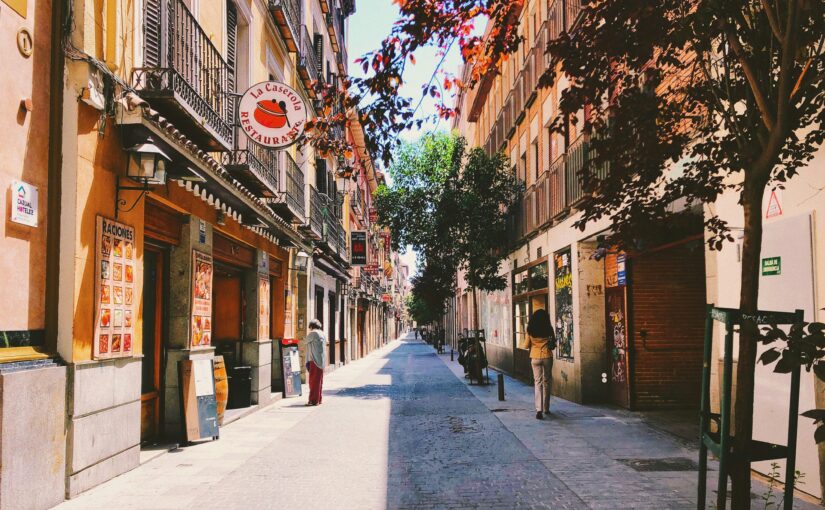Field of study in Wageningen: Bsc Food Technology
Study period exchange: 30/01/2023 – 14/06/2023
Country (exchange): Spain
City (exchange): Madrid
University (exchange): Universidad Politécnica de Madrid
Faculty (exchange): ETSIAAB: Escuela Técnica Superior de Ingeniería Agronómica, Alimentaria y de Biosistemas
2. Motivation for exchange
Why did you choose to go on study exchange?
Improving my Spanish language skills
What is the reason you chose for this country/university?
Improving my Spanish language skills. I never had been in Madrid before, and therefore chose to do my exchange in this specific city.
3. Accessibility to reach destination
Do you have any tips to reach your exchange destination?
I travelled by plane, as it was the fastest and cheapest option. I didn’t had enough time to choose an environmental friendly option, as the semester in Madrid started before the semester in Wageningen ended. In addition, the ESN-card that I got in Madrid allowed me to book my return flight with a discount.
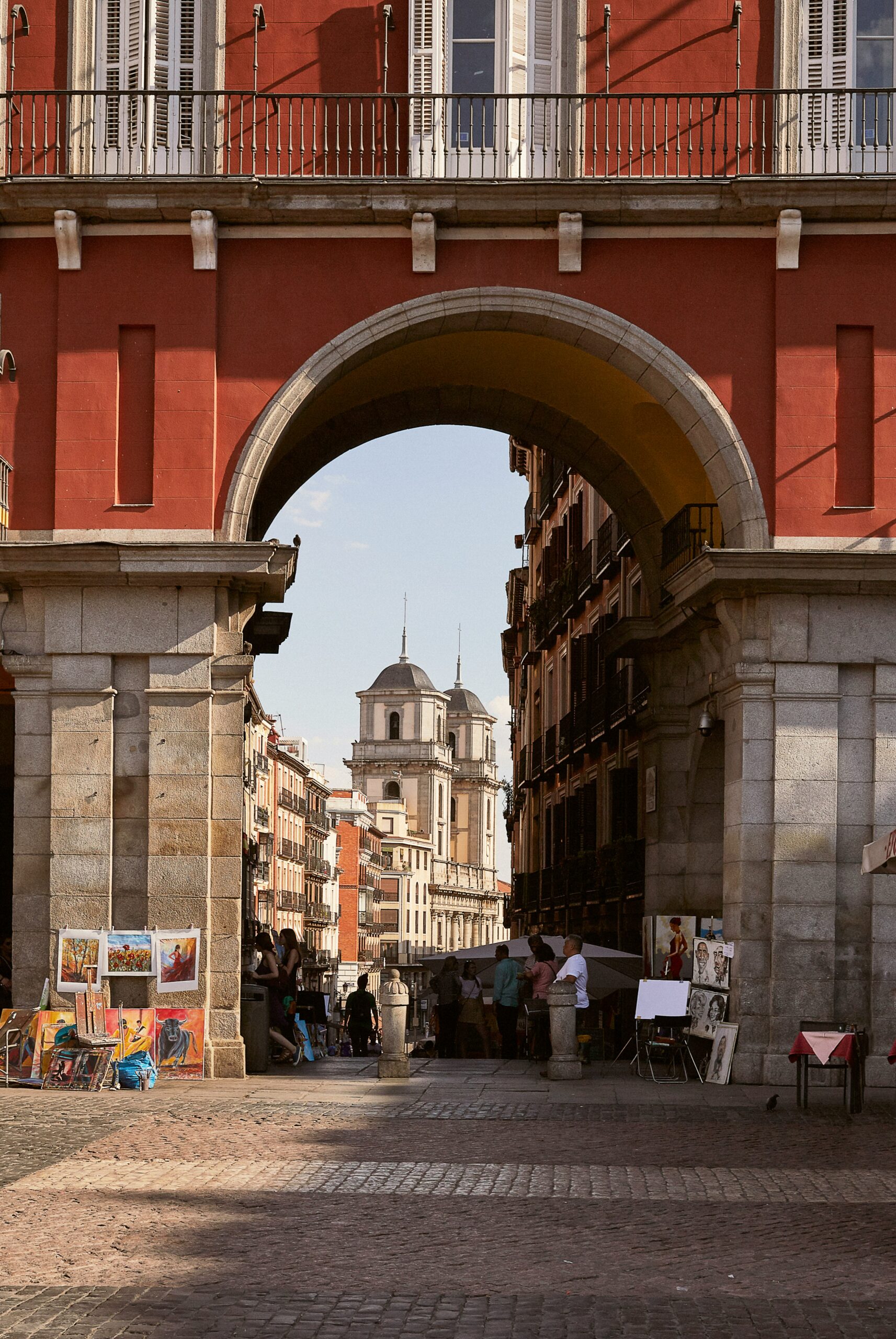
4. University and studying
Could you provide some general information about the followed courses?
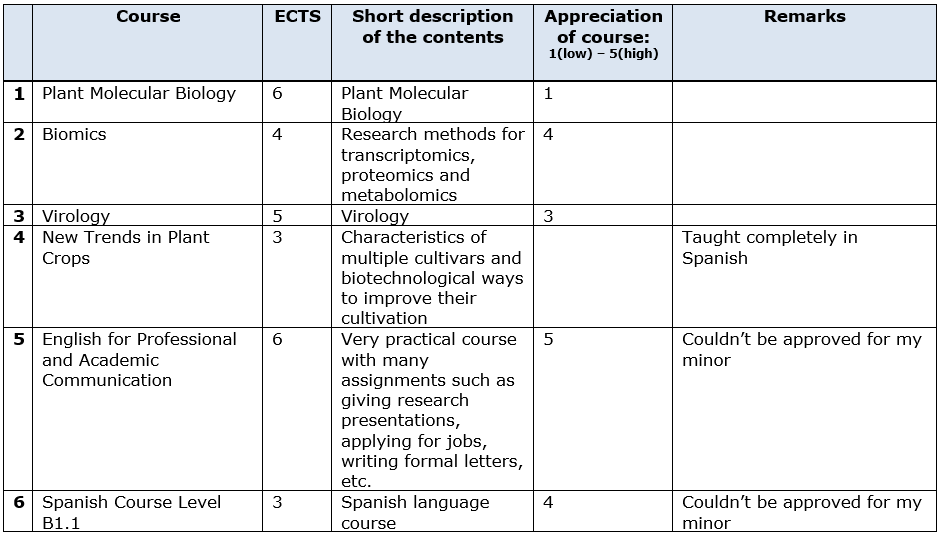 How is the study formalized?
How is the study formalized?
There is way less practical work when comparing to Wageningen University, so this was compensated by more theory. I also noticed that during examination way more small details and facts were asked than I was used to in Wageningen. I had to adapt a bit to the different way of examination (ik moest echt flink ‘stampen’, zoals je dat in het Nederlands zegt..). In addition, the academic year is divided into two semesters, which means that you only have two examination periods in one year (instead of six in Wageningen). During my exchange I followed the biotechnology courses, so this was a bit of a deviation from my own study: food technology. I had to choose these courses, as it was the only study field which offered some English courses. When comparing the biotechnology workload to other studies within my faculty, the biotechnology was way harder.
What is the culture of the university?
The classes were really small, about thirty/forty students at most, but I also had classes with only ten students. For me, it was more comparable to a Dutch high school than an university. The engagement with local students was therefore a bit harder, as it was a small class that had been following the same programme for the last three years. In addition, there was also a bit of a language barrier. However, one on one, the students were really nice and helpful. It was frequently said (by professors, students, coordinators, etc.) that there was a lot of competition between the biotechnology students, but as an exchange student I didn’t really notice this.
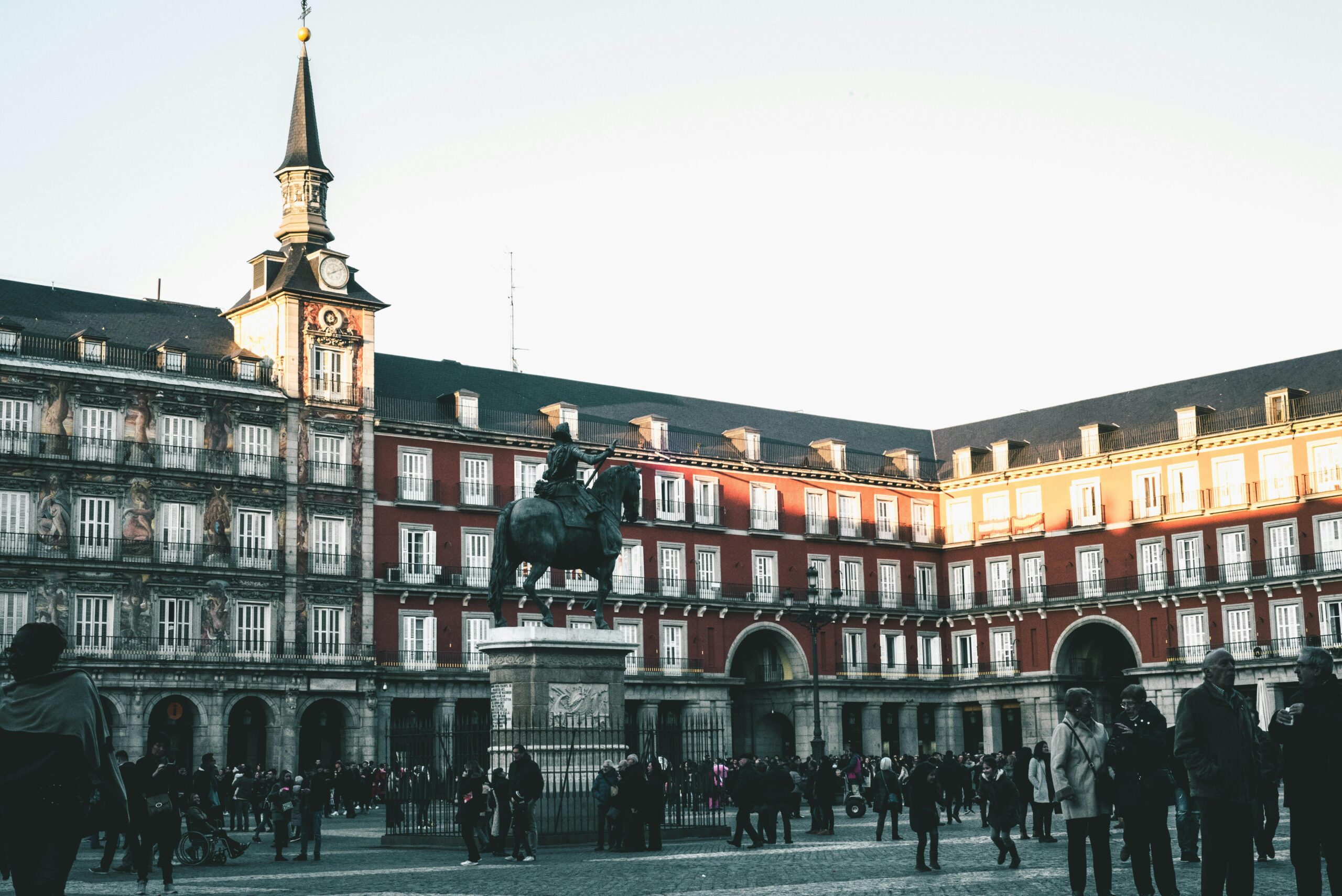
What does the university offer the student additionally?
There is a canteen where you can order the daily menu (€6.40), or other dishes/sandwiches, which most students do. I believe there were some sport facilities, but within my faculty I didn’t meet anyone who used them. The sport facilities were shared with other universities in Madrid, but within the technical university it wasn’t popular.
5. Housing-travelling-living
What are the possibilities for housing?
The university didn’t offer any rooms, there were no rooms on campus. However, multiple sites were available to sign up for a room. The rent rates were about 450, depending on location and facilities.
What is the culture of the country like?
The biggest difference for me was the eating times because in the Netherlands we are used to have dinner very early but in Spain you can even get dinner at a restaurant around midnight. But you will get used to it fast.
Could you give a general price indication of the place of residence compared to living in Wageningen?
I paid €490 in Madrid, whereas I pay €375 in Wageningen. The facilities I have in Wageningen are definitely way better than the ones I had in Madrid, but this also depends on luck. I lived in the city centre, therefore the rent I paid was a bit on the higher side.
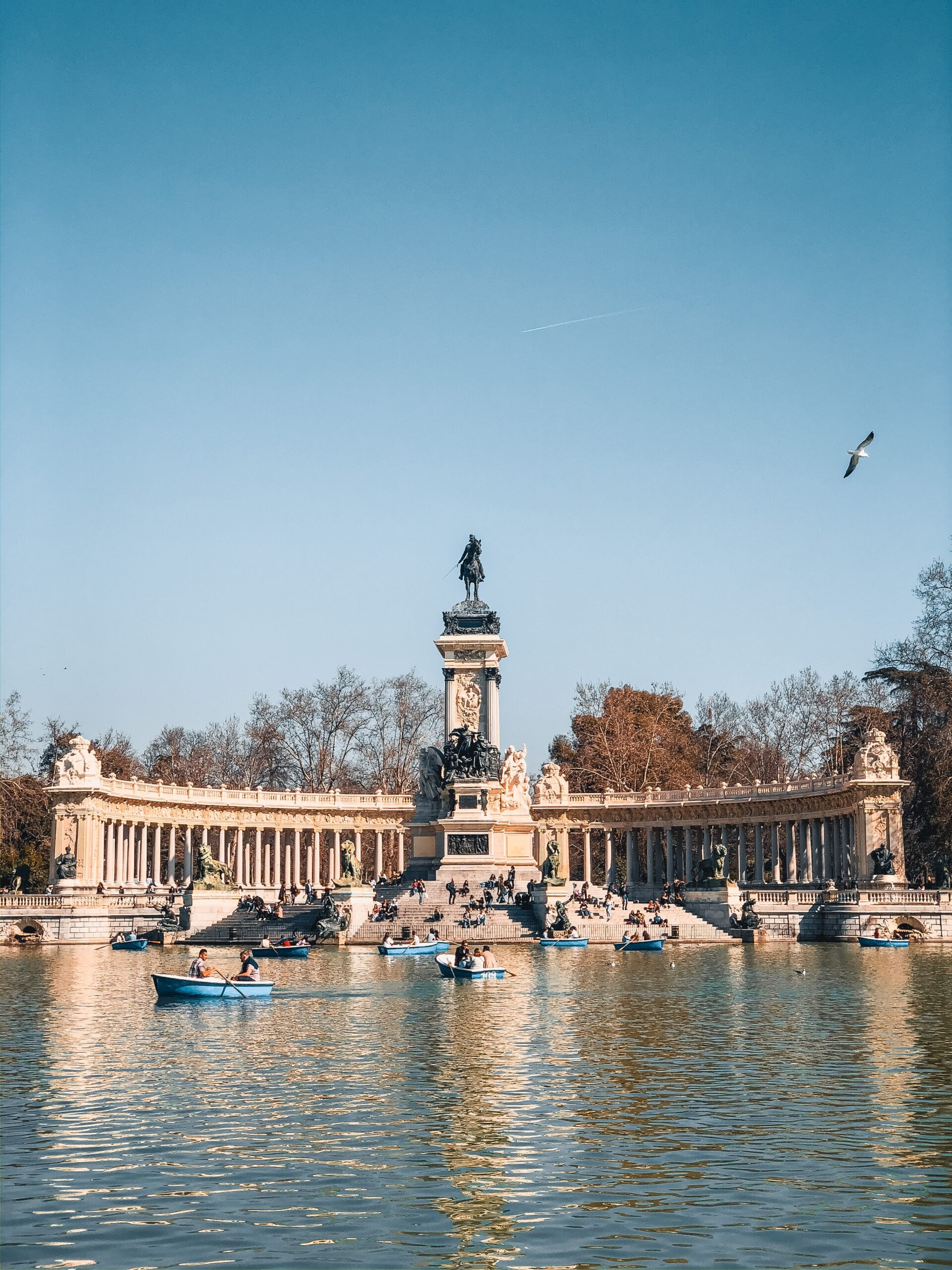
Could you give some information about public transport infrastructure?
I travelled to the university by either bus or subway, which took me 15 minutes. As a student (below 25 years) you can get a special public transportation card, where you only pay €8,- each month to use the whole transportation network of Madrid (bus, subway, trains).
6. Free time
What are must-sees in the area?
There are some nice parks (El Retiro, Temple de Debod) and squares (Puerta del Sol, Plaza de España). You can also visit the Prado museum, which is really famous. You can get everywhere with public transportation, the subway network is very complete. However, you can also just go by foot and walk through the streets of Madrid.
What does not appear in the travel guide, but is worth a visit?
You can go to salsa lessons at the parks, which are really cute. They are usually offered for free or ask a small fee of a few euros.
Do you have general tips and tricks about leisure time?
Just avoid the really touristic places. For example all the paella places, as this isn’t really eaten by people in Madrid. There are a lot of nice places for tapas, where you can eat jamon, croquetas, tortilla, etc.. The nightlife in Madrid is really nice, there are a lot of clubs available.
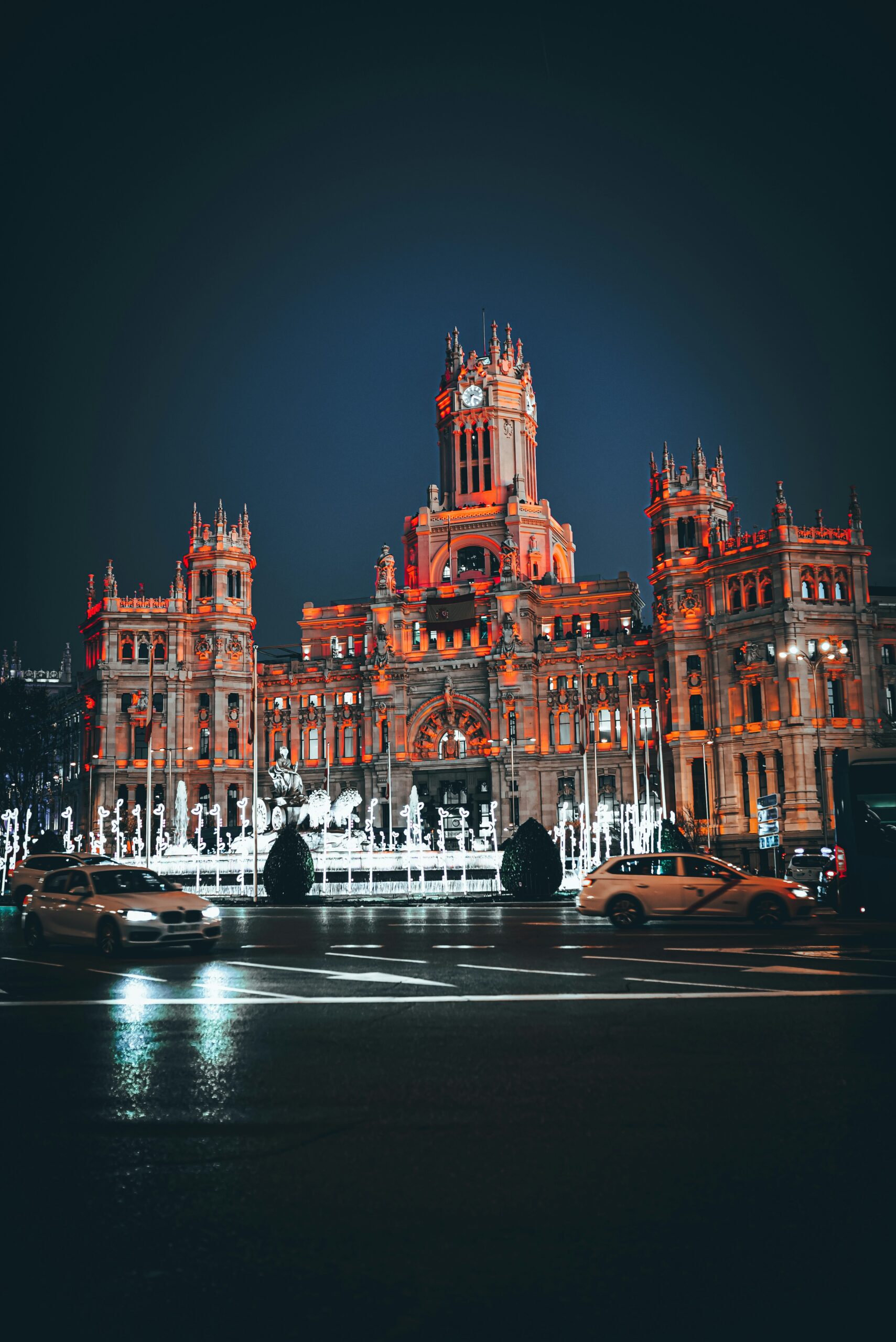
7. Challenges & best moment abroad
What was a challenge you have experienced?
The most difficult challenge was finding the right courses, as most of the courses were taught completely in Spanish. Within my faculty there were only 15 ECTS offered in English each semester, therefore I had to choose some Spanish courses. I had some basic Spanish knowledge, but following courses at a university level in Spanish, is definitely hard if you don’t speak a language fluently.
What was your best memory abroad?
Meeting a lot of new (international) people and acquiring a lot of new (language) skills. In addition, I visited a lot of places within Spain, which I really loved. The daily sun is also a great advantage.
8. Contact Details
Would you like to ask Spanje more questions about her exchange?
Send her a mail: fee.twilt@wur.nl
